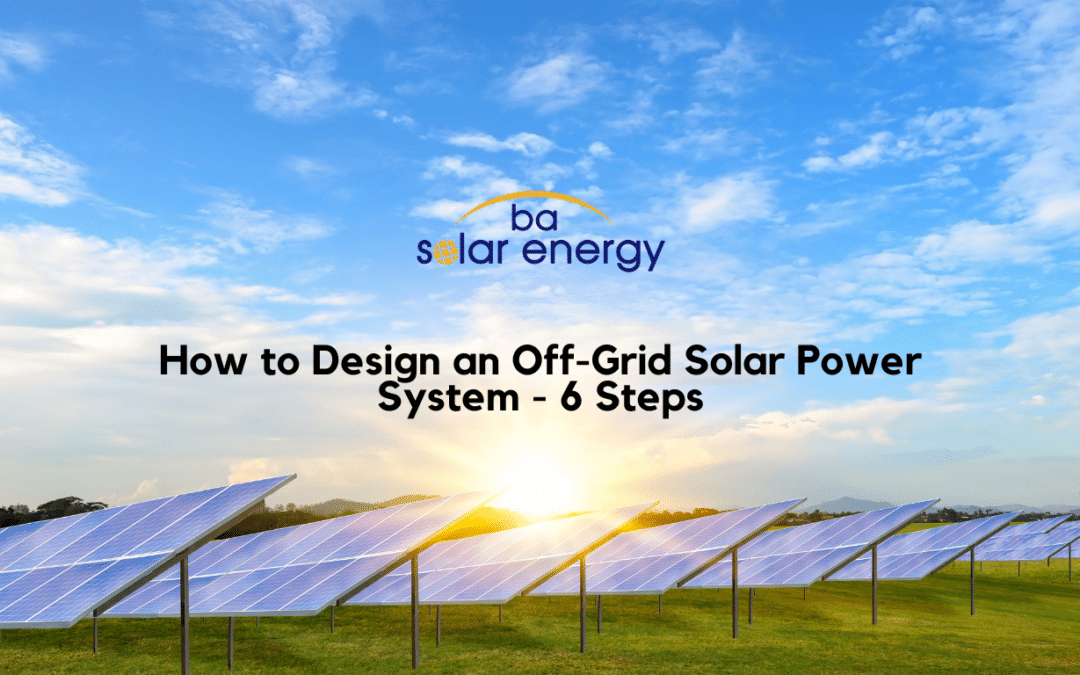An off-grid solar power system is a solar power system that is not connected to the electrical grid. This means that the system must generate all of its own electricity from solar panels. Off-grid solar power systems are often used in remote areas where there is no access to the electrical grid, or in areas where the cost of connecting to the grid is prohibitive.
Components:
- Solar panels: Solar panels convert sunlight into electricity.
- Charge controller: The charge controller regulates the flow of electricity from the solar panels to the batteries.
- Inverter: The solar inverter converts the DC power from the batteries to AC power that can be used to power your appliances.
- Batteries: Batteries store the electricity generated by the solar panels.
- Mounting system: The mounting system is used to attach the solar panels to the roof or ground.
- Wiring: The wiring is used to connect all of the components of the solar power system.
- Safety devices: Safety devices, such as fuses and breakers, are used to protect the solar power system from damage.
Cost:
The cost of an off-grid solar power system will vary depending on the size of the system and the cost of the components. A small system for a home office might cost a few thousand dollars, while a large system for a remote cabin could cost tens of thousands of dollars.
Here are the steps on how to design an off-grid solar power system:
- Estimate your energy needs: This is the most important step, and many people try to skip over it. You need to know how much power you use on a daily basis in order to design a system that will meet your needs. You can use a power usage calculator to help you estimate your energy needs.
- Choose the right solar panels: The size and number of solar panels you need will depend on your energy needs and the amount of sunlight in your area. You can use a solar panel calculator to help you choose the right panels for your system.
- Choose the right batteries: The type and size of batteries you need will depend on your energy needs and the amount of solar power you can generate. You can use a battery calculator to help you choose the right batteries for your system.
- Choose the right charge controller: The charge controller regulates the flow of electricity from the solar panels to the batteries. You can use a charge controller calculator to help you choose the right charge controller for your system.
- Choose the right inverter: The inverter converts the DC power from the batteries to AC power that can be used to power your appliances. You can use an inverter calculator to help you choose the right inverter for your system.
- Install the system: Once you have chosen all of the components for your system, you need to install it. This can be a DIY project or you can hire a professional to do it for you.
Here are some additional tips for designing an off-grid solar power system:
- Oversize your system: It is better to have a system that is too big than one that is too small. This will help to ensure that you have enough power to meet your needs even on cloudy days or during periods of low sunlight.
- Use a battery bank with a large capacity: This will help to store more energy from the solar panels so that you have power available even when the sun is not shining.
- Install a backup generator: This will provide you with a source of power in case your solar system fails or if there is a power outage.
Off-grid solar power systems can be a great way to save money on your energy bills and to reduce your environmental impact. By following these steps, you can design an off-grid solar power system that will meet your needs and provide you with years of reliable service. If you cannot design off-grid solar power systems, you can get online from BA Solar Energy and get it installed.

